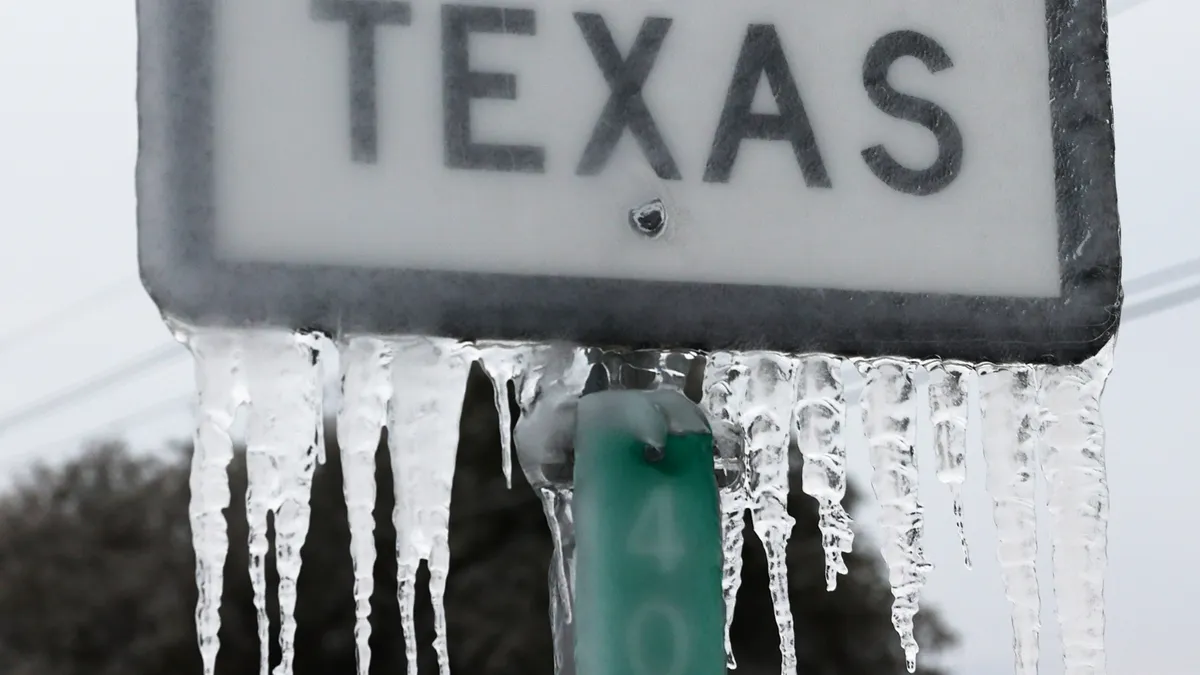Dive Brief:
- The electric grid for most of Texas posted new winter peak demand records in three of the last four days and its operator twice called on consumers to reduce power usage, but has continued to operate reliably through the first frigid temperatures of the 2023-2024 winter season.
- It was the most severe winter test of the Electric Reliability Council of Texas grid since 2021 when Winter Storm Uri caused widespread blackouts. While the weather this week was not as severe, demand in the state has grown significantly over the last three years.
- Conservation efforts “along with additional grid reliability tools, helped us get through record-breaking peak times today and yesterday morning,” an ERCOT spokesperson said in a Tuesday email. ERCOT typically sees demand reduced by up to 1,000 MW when the grid operator issues a conservation calls, they said.
Dive Insight:
A lot has happened in the three years since Uri devastated Texas, causing widespread and lengthy blackouts and almost 250 deaths: Utility regulators directed generators to weatherize their facilities and developed new energy reserve products, while battery developers began connecting to the grid and renewable resources grew.
Dispatchable generators have performed well throughout the cold, said Michele Richmond, executive director of Texas Competitive Power Advocates, which represents power generators and wholesale power marketers in ERCOT.
“While certain operational issues are to be expected during extreme weather events, the thermal/dispatchable fleet has seen improved performance year over year. This is due in no small part to the measures that have been implemented post Uri, such as enhanced weatherization,” Richmond said in an email.
But despite resilience improvements, Texas’ demand for electricity is growing rapidly and experts say investment in energy efficiency and demand response is also needed. ERCOT set new unofficial peak winter demand records of 70,982 MW, 76,340 MW and 78,138 MW on Sunday, Monday and Tuesday, respectively.
ERCOT is a summer peaking system and the all-time record demand is 85,508 MW, set in August.
The grid’s existing assets “might be stronger today than it was during Uri, but it’s over-matched by the extraordinary growth in demand,” Texas energy analyst Alison Silverstein said in an email.
Until Texas “gets serious and aggressive about investing in energy efficiency and demand response for residential and small commercial customers ... we’ll keep falling farther behind and see more and more of these extreme events become high-wire grid emergencies,” Silverstein said.
Transmission constraints meant some wind power was stranded in south Texas, but solar generation had a record day on Tuesday and topped 14,000 MW for the first time, according to Dennis Wamsted, an energy analyst at the Institute for Energy Economics & Financial Analysis.
“Solar works year round and given the strong recent growth in power demand across ERCOT, we believe the system operator and the state would be well-served by working aggressively to expand solar's presence on the grid,” Wamsted said. “This would include efforts to expand the state's transmission capacity to better move solar (and wind and storage) from production sites to load regions.”
Battery storage also likely helped energy prices from going too high on Tuesday morning, Wamsted added.
ERCOT prices reached about $421/MWh at 7:30 AM, he said, and around that time storage resources injected about 1,250 MW onto the grid. Solar started coming online around 8 a.m., helping push prices down to roughly $71/MWh by 8:30 AM.















